Iliopsoas muscle Anatomy, Origin, Insertion, Function, Exercises
Table of Contents
Introduction
- The iliopsoas muscle is a compound muscle composed of the iliac & psoas muscles
- The iliopsoas muscle complex is made up of 3 muscles that include the iliacus, psoas major & psoas minor. This complex muscle system can act as a unit or intervene as separate muscles.
- The iliopsoas muscle is the strongest hip flexor & assists in the external rotation of the femur, playing the main role in keeping the strength & integrity of the hip joint. It is essential for correct standing or sitting lumbar posture, & during walking & running.
- The fascia covering the iliopsoas muscle creates more fascial connections, relating the muscle with different viscera & muscle portions.
- Many different problems may involve the iliopsoas. These conditions may cause pain, weakness, & difficulty with basic tasks such as walking, running, & rising up from a supine position.
Iliacus muscle
Introduction
- The iliacus muscle is shaped like a triangle, flat & an exact fit of the iliac fossa — the curved surface of the largest pelvic bone. Together with the psoas major muscle, it is also known as the iliopsoas muscle. A part of this muscle is attached to the iliac fossa, 2/3rd from its top. another portion is attached to the inside part of the iliac crest, the top, outer portion of the pelvic bone. Other fibers of the iliaccus muscle are attached to the iliolumbar & anterior sacroiliac ligaments (located at the base part of the sacrum) & up to the anterior iliac spine. iliacus muscle fibers then converge & insert on the tendon at the outer side of the psoas major muscle, which stretches from the lumbar spine in the lower back to the lower pelvis. many of these fibers extend to the femur bone or thighbone.
Origin
- Upper 2/3 of iliac fossa of ilium, internal lip of iliac crest, lateral aspect of sacrum, ventral sacroiliac ligament, & lower part of iliolumbar ligament
Insertion
- Lesser trochanter of femur. Its fibers are also inserted in front of those of the psoas major & extend distally over the lesser trochanter.
Structure
- The iliacus arises from the iliac fossa on the interior part of the hip bone, & also from the region of the anterior inferior iliac spine (AIIS). It connects the psoas major to form the iliopsoas. It begins across the iliopubic eminence through the muscular lacuna to its insertion on the lesser trochanter of the femur. iliacus fibers are also inserted in front of those of the psoas major & extend distally over the lesser trochanter.
Function
- The iliacus muscles flex & externally rotate the femur.
- It is also one of the key muscles that help to keep proper body posture.
- When combined with the psoas muscle the2 muscles are considered the strongest hip flexors in the body.
- It is also one of the key muscles that help to keep proper body posture.
- The Iliacus muscle can attach to an anterior tilt of the pelvis down & forward.
- Just like the iliacus, the iliopsoas is controlled for hip flexion. This muscle is also involved in trunk flexion, which is bending the trunk forward such as when you perform a sit-up & bend down to tie the shoes.
- The iliacus is also continuously active during walking but the psoas major is only active during gait shortly preceding & during the early swing phase.
- The iliacus muscle eccentrically controls the lateral side bending of the trunk.
Relations
- The anterior part of the pelvic portion of the iliacus muscle is covered with the iliac fascia, which split it from the peritoneum. This surface of the iliacus is also crossed by the lateral femoral cutaneous nerve, the cecum on the right side, & the iliac part of the descending colon on the left side. The medial margin of the iliacus muscle is in relation to the femoral nerve & lateral margin of the psoas major muscle.
- The anterior part of the thigh portion of the iliacus muscle is located posterior to the fascia lata, rectus femoris & sartorius muscles. It is crossed by the deep femoral artery. The posterior part of the iliacus is adjacent to the hip joint, from which it is split by a large subtendinous iliac bursa.
Nerve supply
- The iliacus muscle is innervated with nerves by the branches of the second & third nerves of the lumbar area through the femoral nerve. (L2, L3)
Blood supply
- Just like the psoas major muscle, the iliacus is innervated by the iliolumbar artery. It collects the blood from the deep circumflex iliac, obturator, & femoral arteries.
Assessment
Palpation
- The patient is supine with a pillow under the knees. Flex the knee & slightly laterally rotated Place palpating hand on the anterior iliac crest & palpate into the iliac fossa with the fingertips. Most of the iliacus is not palpable. Ask the patient to actively flex the thigh at the hip joint & feel for the contraction of the iliacus.
Tightness
- The patient stands against a wall, with heels apart, & shoulders & head touching the wall. Normal is the ability to posterior tilt to touch the small of the back as opposed to the wall. If the patient cannot posterior tilt by flattening their back onto the wall with the feet apart & the hips & knees straight, but can do so with knees bent & the hip flexed, the restriction might be shortened iliacus.
Psoas major muscle
Introduction
- The psoas muscle is a paraspinal muscle situated deep in the body, very close to the spine & the brim of the lesser pelvis. At its distal end, it connects with the iliacus muscle to form the iliopsoas muscle. This depth, combined with the fact that the psoas originates from the sides of the 5 lumbar vertebrae, means it plays an important role in back health.
- It also works to both laterally flex the lumbar spine as well as stabilize & flex the thigh.
- It is essential for correct standing & sitting lumbar posture, stability of the hip joint, & during walking & running
Origin and insertion
Psoas major is a long muscle situated immediately lateral to the vertebral column. It has an origin from the:
- Transverse processes of all the lumbar vertebrae
- Vertebral bodies of T12 to L5
- Intervening intervertebral discs
- The fibers of the psoas major extend inferolateral between the lesser pelvis towards the thigh. They pass along the pelvic brim & inferior to the inguinal ligament towards their merged insertion in the anterior thigh. Along its course, the lateral-most fibers of the psoas major muscle fuse with the fibers of the iliacus muscle to form the iliopsoas muscle. Iliopsoas passes deep to the inguinal ligament & anterior to the joint capsule of the hip to insert onto the lesser trochanter of the femur.
Structure
- The psoas major is divided into a superficial & a deep part. The deep part arises from the transverse processes of lumbar vertebrae L1 to L5. The superficial part arising from the lateral surfaces of the last thoracic vertebra, lumbar vertebrae L1–L4, & the neighboring intervertebral discs. The lumbar plexus is located between the 2 layers.
- Together, the iliacus muscle & the psoas major form the iliopsoas, which are surrounded by the iliac fascia. The iliopsoas muscle runs across the iliopubic eminence through the muscular lacuna to its insertion on the lesser trochanter of the femur. The iliopectineal bursa separates the tendon of the iliopsoas muscle from the external part of the hip-joint capsule at the level of the iliopubic eminence. The iliac subtendinous bursa is situated between the lesser trochanter & the attachment of the iliopsoas.
- Variation
- In fewer than 50 % of human subjects, the psoas major muscle is accompanied by the psoas minor muscle.
Function
The psoas major muscle functions include:
- To connect the upper body to the lower body, the outside to the inside, the appendicular to the axial skeleton, & the front to the back, with its fascial relationship.
- Combined with the iliopsoas muscle, the psoas is a major contributor to the flexion of the hip joint in a supine position or standing.
- Stabilizes the lumbar spine during sitting.
- Work as a stabilizer of the femoral head in the hip acetabulum in the 1st 15 degrees of motion.
- Unilateral contraction of the psoas also helps with lateral motions & bilateral contraction can help elevate the trunk from the supine position.
- The psoas muscle also acts in conjunction with the hip flexors to elevate the upper leg towards the body when the body is static & pull the body towards when the leg is fixed.
- The psoas muscle is also 1 of the core muscles.
Relations
- Superiorly, the psoas major lies posterior to the diaphragm. The Quadratus lumborum is situated lateral to the muscle. In the abdomen, the psoas major is closely connected to a number of retroperitoneal structures. The inferior vena cava is situated medial to the right psoas major muscle. On the left, the abdominal aorta is located medial to the psoas major. The sympathetic trunk & aortic lymph nodes are also situated medially. Other retroperitoneal structures related to the muscle are the kidneys &ureters, the gonadal vessels & the genitofemoral nerve.
- Because of its place immediately lateral to the vertebral column, the roots of the lumbar plexus are embedded in the belly of the psoas major as they exit the vertebral canal. The plexus forms in the muscle with its branches appearing from its lateral border.
- In the thigh, the psoas major contributes to the ground of the femoral triangle. Its tendon iliopsoas tendon is situated deep in the fascia lata, sartorius, rectus femoris & deep femoral artery. It is from the joint capsule of the hip by the iliac bursa. Pectineus & the femoral vein are medial periods the femoral nerve is lateral to the muscle.
Blood supply
- The psoas major muscle is innervated mainly by the iliolumbar branch of the internal iliac artery. The lumbar branches of the aorta or the obturator branch of the internal iliac artery & also branches of the external iliac &femoral arteries contribute to the blood supply
- Venous drainage of the psoas major mirrors the arterial supply. It drains back into the femoral or external iliac & internal iliac veins & also directly into the inferior vena cava.
Nerve Supply
- Branches from the ventral rami of lumbar spinal nerves (L1, L2, & L3) prior they join to form the lumbar plexus. The lumbar plexus is implanted within the Psoas major muscle & its branches emerge from it.
Psoas minor muscle
Introduction
- The psoas minor muscle is a thin, paired muscle of the posterior abdominopelvic portion. It is situated on the anterior part of the psoas major muscle but does not extend with it beyond the inguinal ligament. Despite its close relation to the psoas major muscle, the psoas minor is not considered a portion of the iliopsoas muscle complex.
- The psoas minor is an inconsistent muscle, found only in a certain portion of the population. When present, it works on the lumbar spine to produce a weak flexion of the trunk.
Origin & insertion
- The psoas minor muscle originates from the lateral aspect of the bodies of the T12 & L1 vertebrae, as well as the intervertebral disc found between them.
- The muscle then extends inferiorly & tapers into a long, flat tendon, which is often longer than the muscle belly.
- The tendon inserts onto the pecten pubis pectineal line of pubis & the iliopubic eminence via a thickened band of fascia called the iliopectineal arch.
Structure
- The psoas minor muscle arises from the vertical fascicles inserted on the last thoracic & 1st lumbar vertebrae. From there, it passes down onto the medial border of the psoas major, & is inserted into the innominate line & the iliopectineal eminence. Additionally, it attaches to & stretches the deep surface of the iliac fascia & occasionally its lowermost fibers reach the inguinal ligament. It is posterolateral to the iliopsoas muscle. Variations happen, however, & the insertion on the iliopubic eminence many times radiates into the iliopectineal arch.
- The psoas minor muscle receives oxygenated blood from the 4 lumbar arteries inferior to the subcostal artery & the lumbar branch of the iliolumbar artery.
Function
- The psoas minor is a very weak muscle & its absence does not result in any reduced functionality of the body, thus its exact function is not entirely clear. However, it is suggested that it assists in trunk flexion, allowing a person to bend forward at the lumbar spine.
Relations
- The psoas minor muscle is situated entirely on the anterior surface of the psoas major muscle & thus shares a lot of its anterior relations. The right psoas minor sits posterior to the inferior vena cava & is crossed by the most distal end of the ileum, while the left psoas minor is crossed by the colon.
- Along its anteromedial border, the muscle is related to the sympathetic trunk & the aortic lymph nodes.
Nerve supply
- The psoas minor muscle is supplied by direct branches of the lumbar spinal nerves.
Variation
- The psoas minor muscle is considered inconstant & is also absent, only being present in 40% of human specimens studied. It has an average length of about 24 cm, of which about 7.1 cm is muscle tissue & about 17 cm is a tendon.
Blood supply
- The vascular supply of the psoas minor muscle comes importantly from the lumbar arteries. However, it also receives many minor contributions from the blood supply network of the psoas major muscle. This may add branches of the iliolumbar, obturator, external iliac & femoral arteries.
Clinical importance
Many different problems may involve in the iliopsoas. These conditions may cause pain, weakness, & difficulty with basic tasks such as walking, running, & rising up from a supine position. Conditions that may affect the iliopsoas may include:
Iliopsoas tendonitis: This happens when the tendons that attach the iliopsoas to the femur become irritated & inflamed. Symptoms of iliopsoas tendonitis may include pain in the front of the hip when flexing the hip,3 pain with stretching the hip into extension, & difficulty with running. Iliopsoas tendonitis happens as a result of overuse,& muscular imbalance or tightness & weakness of neighboring muscles may contribute to the condition.
Iliopsoas bursitis: If the small, fluid-filled sac in the front of the iliopsoas becomes irritated, bursitis may result. This irritation of the bursa can result in hip pain & difficulty with flexing & extending the hip. Usually, iliopsoas bursitis does not hurt when forcefully contracting the hip. Rather, the pain happens when the hip is stretched & the iliopsoas muscle presses into the bursa.
Snapping hip syndrome: Often called “dancer’s hip,” snapping hip syndrome happens when there is a popping or snapping sensation in the front of the hip while moving it. It’s usually painless, but it can be rather annoying to continuously feel a snapping sensation while moving. Snapping the hip is often caused by tightness of the iliopsoas muscle, allowing it to rub & snap around other bony or ligamentous structures in the hip.
Weakness of iliopsoas due to the lumbar injury: If you have lower back diseases such as herniated discs or lumbar facet arthritis, the femoral nerve may become compressed. This may cause pain in the front of your thigh, and your iliopsoas muscle may become weak & even decrease in size as a result. This muscle weakness due to lumbar radiculopathy may make it difficult to walk & rise from a supine position normally. If the weakness is severe, immediate attention may be necessary to get pressure off the nerve & to restore normal nerve function to the muscle.
Spasm of iliopsoas: Occasionally people with low back pain & hip pain experience iliopsoas spasms. This causes a tight feeling in the front of the hip & makes it difficult to extend the hip backward. Iliopsoas spasms may be caused by repetitive strain & overuse. Spasms of the iliopsoas may also happen as the result of nerve injury due to a neurological condition such as multiple sclerosis & after a stroke. While many of the diseases that affect the iliopsoas muscle may cause pain & limited mobility, other conditions that cause hip pain may be at play.
Hip labrum tear: A hip labrum tear can cause pain in the front of the hip, & a condition known as femoroacetabular impingement can make flexing & extending the hip painful. Hip arthritis can cause limited mobility with the hip joint. Hip labrum tear conditions may or may not affect the iliopsoas directly.
Iliopsoas Stretching Exercise
- An iliopsoas muscle is in charge of flexing as well as laterally rotating the thigh at the hip joint. This also helps in flexion as well as stabilization of the trunk & helps with good posture. An iliopsoas includes the iliacus, psoas major, as well as psoas minor muscles,
- which combine together and form the iliopsoas muscle.
- Iliopsoas stretching is a great exercise to increase flexibility to improve posture as well as stability of the trunk. This exercise has many health benefits and fitness levels.
- This muscle group attaches the spine to the femur. A psoas starts from the lower six vertebrae of the spine. An iliacus starts from the inside bowl of the pelvis.
- They meet & inlay on the top of the femur, or upper leg bone. An iliopsoas works to maintain the trunk while activities namely lifting, pulling, as well as pushing.
- An iliopsoas also moves the knees toward the chest. Such as swinging the leg forward when running & when doing kicking movements in sports such as soccer.
- Performing the iliopsoas stretch gives you so many boons in daily life performance.
There are different types of iliopsoas stretch:
- Standing Hip Flexor Stretch
- Kneeling Hip Flexor Stretch
- Hip Flexor Bed Stretch
- Table Psoas Stretch
- Runner’s Lunge
- Hips Elevated stretch
- Supported Side-Plank Reach
- Seated butterfly stretch
- Knee to chest stretch
- Pigeon Pose
- Standing Stance Pelvic Tilt
- Cobra Stretch
- Wall psoas Stretch
- Sumo Squat Stretch.

Standing Hip Flexor Stretch (Iliopsoas stretching)
- This stretch is beneficial for the person who cannot take the kneeling position.
- How to stretch: Stand tall with the feet around hip distance apart.
- Step the left foot forward into the split stance.
- Engage the core muscle as well as tuck the pelvis. The patient may place the hands on the left leg.
- Maintain the back leg straight as well as gently lunge forward with the left leg.
- The patient may feel a stretch in the front of the hip, groin, as well as thigh of the right side.
- Hold the lunge position for 20 to 30 seconds. The person should not feel any low back pain. If you do, release the stretch.
- Gently return to the starting position & change sides.
- Do the standing hip flexor stretch 2-3 times on each side.
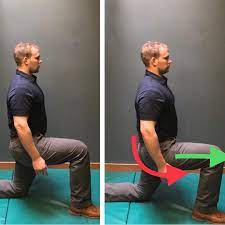
Kneeling Hip Flexor Stretch
- How to stretch: Take a half-kneeling position with the left leg about two feet in front of the right leg.
- A left knee should form a 90-degree angle. The patient needs to use the mat for cushioning.
- Place the hands on the left knee, and keep an upright posture.
- After that, incline slightly forward till you feel the stretch in the front of the hip, groin, & thigh of the right side.
- Hold the kneeling position for 20 – 30 seconds. The person should not feel any low back pain. If the patient does, release the stretch.
- Slowly come back to the starting position & change sides.
- Do the kneeling hip flexor stretch 2-3 times on each side.
Glute Bridge
- A bridge assists you to stretch the iliopsoas during also strengthening the glute muscles.
- How to stretch: Place the exercise mat on the ground.
- Lie in the supine position with the arms at the sides, your both knees bent as well as your feet flat on the floor.
- Engage the glutes & raise the hips to create the bridge between the knees and shoulders as well.
- Lift the hips until you feel the stretch in the iliopsoas muscle in both legs.
- If you experience lower back pain, down the hips slightly, but maintain the glutes tight.
- The patient cannot always feel the stretch so do not keep forcing through back pain.
- Hold the bridge position for 20 – 30 seconds.
- Lower the hips to the floor & repeat.
- Do the glute bridge 10 times.
- This also assists you in walking & doing the daily tasks.
- This increases blood supply to the front of the thighs.
- Stretching gives relaxation to the muscles.
- Also, increases the range of motion around the hip joint. Such as hip flexion, and lateral rotation.
Hip Flexor Bed Stretch
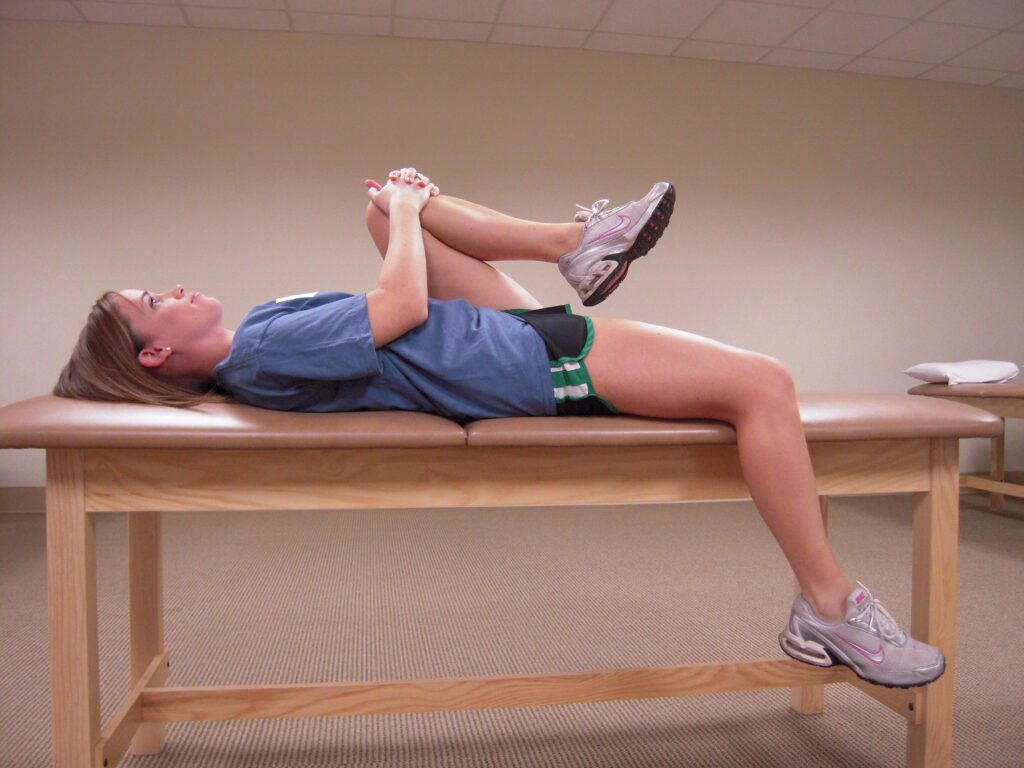
- How to do this stretch: Lie in the supine position on the bed & position yourself with the left leg closest to the edge of the
- bed.
- Slowly let the left leg hang down to the side of a bed.
- The right leg may stay bent with the foot on the bed.
- The patient can feel the stretch in the hip flexor.
- Ideally, the foot will hover over the ground instead of touching it. But this is okay if it does touch the ground.
- Deepen the stretch by slowly bending the knee. The person should feel the across the thigh and front of the hip.
- Hold the hanging position for 20 – 30 seconds.
- Come back to the left leg of the bed & rotate so the right side is closest to the edge of the bed.
- Do the hip flexor bed stretch 2-3 times on each side.
Table Psoas Stretch
- How to stretch: Choose a table that is slightly lower than the hip level.
- Stand with the left side next to the table & lift the left leg behind you as well as put it onto a table with a knee facing down.
- The leg will be aligned. The patient may put the folded towel under the knee to relieve any pressure from a table.
- Place the left hand on the table in front of you. The right leg should be slightly flexed.
- Gently move into the stretch by raising the chest up tall as well as opening up the hip flexor area.
- Pause when you feel the stretch in the left hip.
- Hold the standing position for 20- 30 seconds.
- Let go of the stretch & repeat on the opposite side.
- Do the table psoas stretch three times on each side.
Runner’s Lunge
- How to do this stretching: Start kneeling with both knees on the ground.
- Then, bring the left foot forward so that the left knee is directly above the left ankle.
- Simultaneously extend the right leg behind you so that the right knee is behind the right hip as well as the top of the foot
- is on the floor.
- Rest the hands on the left thigh.
- For a deeper stretch, drive the top of the back foot into the ground.
- Pause for 60-120 seconds, then repeat the movement on the opposite side.
- It is one repetition. Do it 3-4 times.
Hips Elevated stretch
- How to do the stretching exercise: Lie down in the supine position with the extended in front of you & the arms at the sides.
- After that, put the foam roller or block under the hips as well as low back.
- So the hips are elevated and the head & shoulders are resting on the ground.
- Bend the right knee & wrap the arms around the shin to bring it closer to the chest.
- Hang there for 60 – 120 seconds.
- Then repeat the movement on the opposite side.
High Lunge
- How to stretch: Stand tall with the feet around shoulder-width apart and the hands at the sides.
- Step the right foot a couple of feet behind you & bend the left knee 90 degrees, so it is directly above the left
- ankle.
- Press the right toes as well as the ball of the foot into the ground and straighten the arms directly overhead.
- Hang up for one to two minutes before repeating on the opposite side.
Half Frog
- How to do this stretch: Begin lying on your stomach with the legs extended behind you.
- Rest the forehead on the back of the hands.
- Bend the left knee so that it is parallel to the left hip, as well as flex the left foot.
- The left shin should be aligned with the right leg.
- Press the left knee into the ground to bring the left inner thigh as close to the mat as possible.
- Hold for 60-120 seconds before repeating on the opposite side.
Hero Pose
- How to do this stretching: Begin kneeling with both knees on the ground.
- Then put a block or even foam roller between the feet, just below the tailbone.
- Flex the knees to lower yourself down on the block or roller.
- Maintaining the knees together & the tops of the feet pressed into the ground.
- Sit tall with the shoulders directly above the hips.
Supported Side-Plank Reach
- How to do this stretching exercise: Begin kneeling with both knees on the ground, then extend the right leg out to the side.
- Simultaneously place the left palm on the ground, directly below the left shoulder, & reach the right arm over the
- right ear.
- Your body should form a direct line from your right ankle to your right hand.
- Press the outer edge of your right foot into the floor and rotate your shoulders so they are side by side with the wall in
- front of you.
- Pause for one to two minutes, then repeat the movement on the opposite side.

Seated butterfly stretch
- How to perform the stretching: Sit on the ground or on an exercise mat.
- Place the soles of the feet together in front of you.
- Let the knees flex out on either side.
- Maintain the back straight as well as the abs engaged.
- Relax the knees as well as allow them to down towards the floor.
- Hold the butterfly pose for 10 – 30 seconds.
- To feel a deeper stretch, lean forward while maintaining the back straight.

Knee to chest stretch
- How to do this stretch: Lie down in the supine position with the legs extended on the floor.
- Gently bend the left knee toward the chest.
- Maintaining the back flat, pull the left knee as close to the chest as possible without discomfort.
- Stretch the right leg out as far as possible & squeeze the glute.
- Holding time is 10-15 seconds.
- Return to the starting position & repeat with the opposite leg.
Pigeon Pose
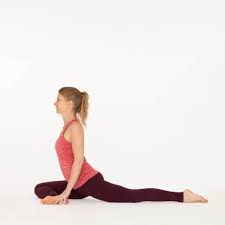
- How to do this stretching: Begin in the plank position.
- Lift the right foot off the floor and slide it forward so your knee is on the ground next to your right hand and your foot
- is near your left hand.
- Exactly where your knee and toes drop will depend on your flexibility.
- Slide your left leg back as far as you can while maintaining your hips square.
- Lower yourself to the ground and onto your elbows, bringing your torso down as far as possible.
- Hold the stretch without letting your chest drop.
- When you feel like you have gotten a good stretch, switch sides.
Standing Stance Pelvic Tilt

- How to do stretch: Stand up tall with good posture, chest pointed up as well as both shoulders back.
- Push the pelvis back & under.
- Hold the standing pose for 10 – 20 seconds.
- Release.
Cobra Stretch
- How to do stretching: Lie down in the prone position.
- Press through the hands to extend the back.
- Engage the glutes to stabilize a pelvis.
- When the patient feels stretched in front of the thigh, pause there for 10-15 seconds as well as release.
- Perform the cobra stretch 3-4 times.
Wall psoas Stretch

- How to do this stretch: Take the Lunge position in front of a wall.
- Rest your right foot on a wall.
- Drive the knee closer to a wall.
- Rotate the hips backward again.
- To lower the intensity of the stretch, drive the knee forward.
- Hold the psoas stretch for 15-20 seconds & do it 3-4 times.
Sumo Squat Stretch
- How to do this stretch: Stand tall with the feet wider apart.
- Laterally rotate the feet. The knees & toes are pointing out.
- Maintain the back straight as well as the chest facing up.
- Squat downward while maintaining the thighs facing out.
- Pause that squatting position for 10-15 seconds & perform it 2-3 times.
What are the safety precautions the patient should take while iliopsoas stretch?
There is a guideline you have to follow while psoas stretch:
- The patient has to hold the iliopsoas stretch for a certain amount of time, like 20-30 seconds. That way they are typically suggested after workouts, once the muscle group is comfortable. Since an iliopsoas muscle is connected with the hips & trunk, this is critical to do stretches with precise form. Go slow when going into the stretch, as well as never ever go to the point of discomfort.
- To obtain the most out of the stretching routine, experts suggested performing flexibility exercises for all of the major muscles as well as tendon groups a minimum of two to three times a week.
- Do not stretch the muscle where you have prior injuries, namely a sprain, bursitis, fracture, etc.
- Do not bounce while the stretch, this can cause injuries to the muscle.
- Never skip stretching, this may cause a reduction in the range of muscle. The patient may increase it by doing the daily stretch.
What are the Health Benefits of stretching the Iliopsoas muscle?
There are so many benefits the patient may achieve by performing iliopsoas stretch. some are below:
- Tight iliopsoas muscles are the main problem for many people, especially if the patients spend most of the day seated. That is due to when we take a sitting position, an iliopsoas muscle shortens & becomes inactive. Iliopsoas stretch may lose the tight muscles.
- Daily stretching of the iliopsoas muscle can decrease the risk of injuries, stabilize the trunk, as well as increase posture.
- This can support your move from a sitting position to standing.
- Stretching an iliopsoas muscle can also reduce hip pain as well as improve hip mobility, And if you have pain in the lower back, performing the proper iliopsoas stretches may help decrease the pain & stop further injury.
- Reduce the risk of Iliopsoas muscle pain or Iliopsoas muscle strain
Iliopsoas muscle strengthening Exercises:
- After the follow of Electrotherapy & massage for 2 -3 days release muscle pain the physiotherapist then the therapist advised to you strengthening exercises release to muscle weakness.
- This strengthening exercise is always advised when you feel to release pain & when you feel comfortable.
This all-strengthening exercise helps you with muscle weakness & pain.
- Glute Bridge
- Runner’s Lunge
- Hips Elevated
- High Lunge
- Half Frog
- Hero Pose
- Supported Side-Plank Reach
- Lying hip rotation
- Sidekick
- Hip raises
- Leg raises
- Frankensteins
- Hanging Leg Raise
- Bridging Psoas March
- Romanian Chair Leg Raises with Dumbbell
- boat pose
- lunge
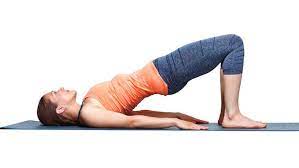
Glute Bridge:
- You are lying on your back with your arms at your sides knees bent & feet flat on the floor.
- Then Engage your glutes muscle & lift your hip joint to create a bridge between your shoulders & knees.
- Raise your hip joint till your feel a stretch in the iliopsoas muscle in both legs.
- When you feel lower back pain then lower your hip joint slightly, but must keep your glutes muscle tight.
- Hold this stretching position for 20 to 30 seconds.
- Then Slowly return to the starting position.
- Perform this exercise 10 times in 1 session & perform 3 sessions per day.

Runner’s Lunge:
- You are starting with a kneeling position with both knees on the ground.
- Then bring your right foot forward so that your right knee joint is directly above your right ankle.
- Extend your left leg behind so that your left knee joint is behind your left hip joint & the top of your foot is on the ground.
- Then Rest your hands on your thigh.
- For to deeper stretch, drive the top of your back foot into the ground.
- Hold for exercise position for 2-3 minutes, then repeat this movement on the opposite side.
- Perform this exercise 10 times in 1 session & perform 3 sessions per day.
Hips Elevated:
- You are lying on your back with your legs straight out in front of you & your arms at your sides.
- Then, place a foam roller & block under your hip joint & low back so that your hip joint is elevated
- Must keep your shoulder joint & head resting on the ground.
- Then Bend your left knee & wrap your arms around your shin to bring it closer to your chest.
- Hold for this exercise 10 seconds.
- Then Slowly return to the starting position & repeat on the opposite side.
- Perform this exercise 10 times in 1 session & perform 3 sessions per day.
High Lunge:
- You are standing with your feet shoulder-width apart & your hands at your sides.
- Step your left foot a couple of feet behind you & bend your right knee joint at 90 degrees, so it is directly above your right ankle joint.
- Press your left toe & the ball of your foot into the ground.
- Then extend your arms directly overhead.
- Hold for this exercise 10 seconds.
- Then Slowly return to the starting position & repeat on the opposite side.
- Perform this exercise 10 times in 1 session & perform 3 sessions per day.
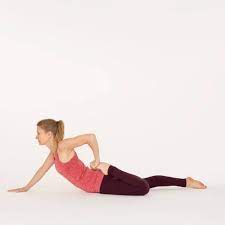
Half Frog:
- Start this exercise by lying on your stomach with your legs stretched out behind you.
- Rest your forehead on the back of your hands.
- Bend your right knee joint so that it stays parallel to your right hip joint & flex your right foot.
- Must be placed on Your right shin parallel to your left leg.
- Then Press your right knee joint into the ground to bring your right inner thigh as close to the mat as possible.
- Hold for this exercise 10 seconds.
- Then Slowly return to the starting position & repeat on the opposite side.
- Perform this pose 5 times in 1 session & perform 3 sessions per day.
Hero Pose:
- This exercise is Start with a kneeling position with both knee joints on the ground.
- Place a block & foam roller between your feet, just under your tailbone.
- Bend your knee joint to lower yourself down on the block & roller.
- Must be Keep your knees joint together & the tops of your feet pressed into the ground.
- You are sitting tall with your shoulder joint directly above your hip joint.
- For a deeper stretch in this pose, walk your hands behind you with fingers facing your toes & lean back slightly.
- Then Hold this pose for one to two minutes.
- Perform this pose 5 times in 1 session & perform 3 sessions per day.
Supported Side-Plank Reach:
- This exercise is to Start with a kneeling position & both knees on the ground, then extend your left leg out to the side.
- Place your right palm on the ground, directly below your right shoulder joint.
- Try to reach your left arm over your left ear.
- Keep Your body in a form a straight line from your left ankle joint to your left hand.
- Then Press the outer edge of your left foot into the ground & rotate your shoulder joint so that they are parallel to the wall in front of you.
- Hold this exercise position for 10 seconds & repeat the movement on the opposite side.
- Perform this exercise 10 times in 1 session & perform 3 sessions per day.
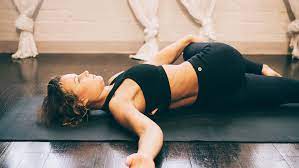
Lying hip rotation:
- You are lying on the floor with your feet flat & knee joints bent.
- Then Lay one ankle joint across the other knee joint.
- Rotate the hip joint in & out.
- Hold this exercise position for 10 seconds
- Perform this exercise 10 times in 1 session & perform 3 sessions per day.
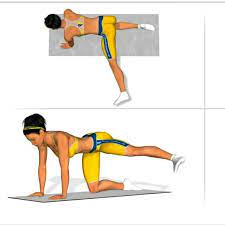
Sidekick:
- You are in a Standing position & raise one leg out to the side.
- Do this exercise on both sides & repeat between 10 times per side.
- When the strength increases, try adding light weights to the ankle joint.
- You are also Holding onto a wall for balance if you need it.
- Hold this exercise position for 10 seconds
- Perform this exercise 10 times in 1 session & perform 3 sessions per day.
Hip raises:
- You are lying on the ground with both feet planted on the floor near the buttocks.
- Then try to Raise your leg straight up must keep your thigh parallel.
- Raise the hip joint off the ground.
- Hold this exercise position for 10 seconds
- Perform this exercise 10 times in 1 session & perform 3 sessions per day.
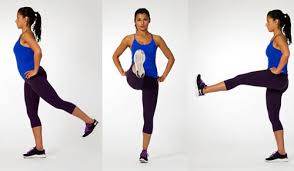
Leg raises:
- Place your both hands & knee joints on the floor.
- Then Raise one foot back towards the sky & return to all fours.
- Hold this exercise position for 10 seconds
- Perform this exercise 10 times in 1 session & perform 3 sessions per day.
Frankenstein
- You are Standing up straight with your arms by your side & step forward with your left foot.
- Try to Swing your leg in the air as high as possible without arching your back.
- Then reach forward with your left hand to touch your right foot.
- Hold this exercise position for 10 seconds
- Perform this exercise 10 times in 1 session & perform 3 sessions per day.
Hanging Leg Raise
- First Hang from a pull-up bar that is high enough so that your feet do not touch the ground when the legs are extended.
- With a firm overhand grip try to flex your hip joint & knee joint simultaneously as you draw your legs out & up towards your chest without using the momentum.
- Then Slowly return to the starting position &repeat.
- Hold this exercise position for 10 seconds
- Perform this exercise 10 times in 1 session & perform 3 sessions per day.
Bridging Psoas March
- First Loop a mini band around the balls of your feet.
- Then place your heels on an elevated surface with your toes pointed up with your body straight.
- Try to Lift your hip joint, and engage your core & glute muscles.
- Try to bring one knee towards your chest but must keep the other leg straight.
- Must be Avoid the hip joint sagging your butt.
- Then Return to the working leg slowly & repeat on the other side.
- Hold this exercise position for 10 seconds
- Perform this exercise 10 times in 1 session & perform 3 sessions per day.
Romanian Chair Leg Raises with Dumbbell
- First, take to Position yourself in the Roman chair with a light dumbbell securely between your feet.
- Must be Keep your torso upright & press the lower back against the backrest while your forearms rest on the pad.
- Try to Lift your legs to parallel to the floor by flexing at the hip joint while keeping your knee joint straight.
- Then Slowly reverse to the starting position & repeat.
- Hold this exercise position for 10 seconds
- Perform this exercise 10 times in 1 session & perform 3 sessions per day.
Boat Pose:
- You are sitting on a mat with your torso upright, knee joint bent & feet flat on the ground.
- Lean back slowly & tucking your tailbone under so that you are not putting pressure on it.
- While you leaning back try to extend your legs into the air & get your spine in a neutral position by eliminating the arching in your spine.
- Lift your chest &must keep your shoulders down & hold for time.
- Hold this pose for one to two minutes.
- Perform this pose 5 times in 1 session & perform 3 sessions per day.
Lunge:
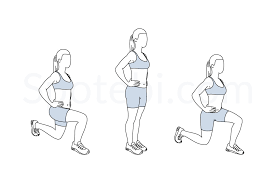
- This exercise is start in a standing position, look straight ahead & take a generous step forward with your right foot.
- Must be Keep your trunk upright throughout the movement.
- Then Bend your extended knee joint & transfer your weight onto your right leg.
- Try to lower yourself slowly into the lunge till your left knee joint is on the floor.
- Your right knee joint should be directly above your right ankle joint.
- Then Step back into a standing position & Repeat with your left leg in front.
- Hold this exercise position for 10 seconds
- Perform this exercise 10 times in 1 session & perform 3 sessions per day.
FAQ
Symptoms of iliopsoas bursitis
You may experience pain that initiates around the front of the hips. The pain may also radiate over the thighs and to the knees. Some patients also have pain in their buttock region. They may feel stiffness & tightness in the mornings.
Generally known as iliopsoas muscle. This complex muscle system can act as a unit or intervene as separate muscles. It is essential for correct standing & sitting lumbar posture, stabilizing the coxofemoral joint, & is crucial during walking & running.
lesser trochanter of the femur
The inferior part of the iliopsoas below the inguinal ligament forms a portion of the floor of the femoral triangle. The iliopsoas muscle finally converges into a tendon that inserts into the lesser trochanter of the femur.
Origin: The iliopsoas muscle has its arise at the fusion of the psoas major & iliacus muscles. This fusion happens at the level of L5-S2, & the combined muscles pass from the pelvis to the thigh under the inguinal ligament.
Typical recovery times range between 6-8 weeks. Often, a person will have physical therapy, take medications, & ice the injury. Physicians recommend limited activity during the recovery period.

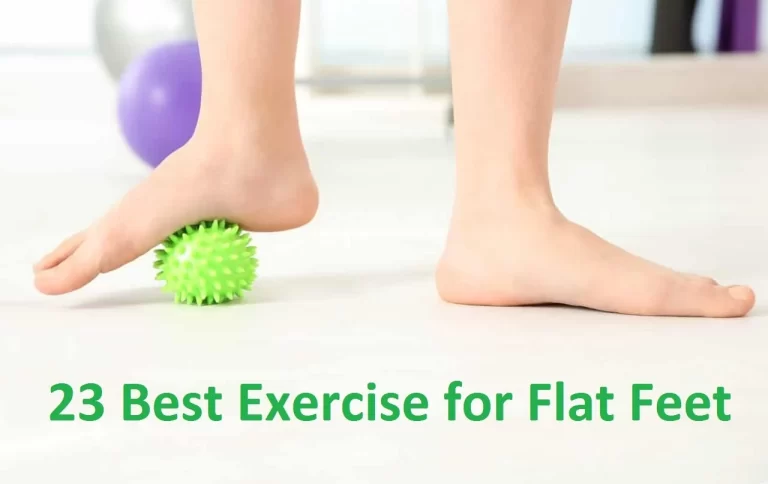
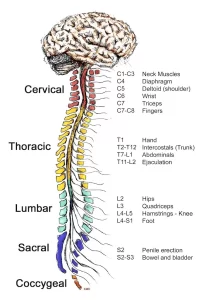

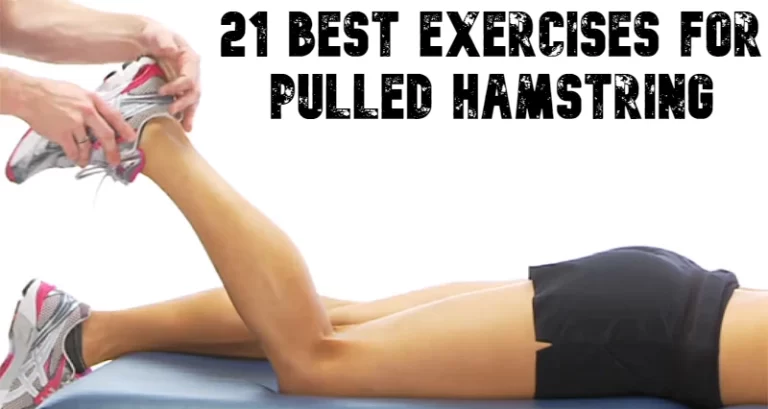
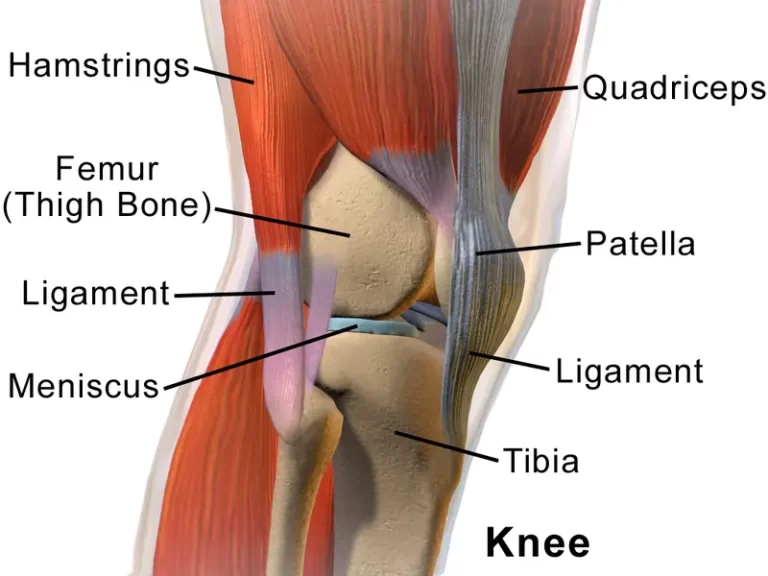
5 Comments